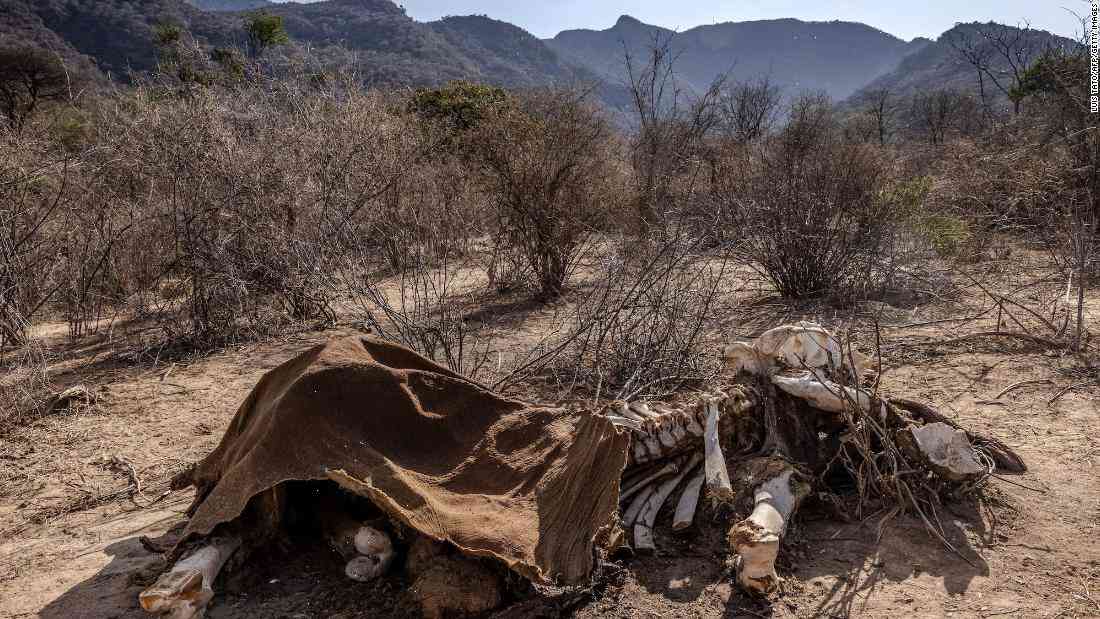Hundreds of elephants, wildebeests and zebras dead in Kenya amid prolonged drought
A herd of wildebeests runs over a dead elephant carcass at a protected area in the Mara Estates in Kenya, September. An animal disease outbreak has killed more than 400 leopards in Tanzania and Malawi in what conservationists say is the largest number of animals killed by a single predator in 30 years. The Kenyan National Parks (KNAP) have confirmed at least 400 of these animals have been killed by the disease, with most being wild animals from central Kenya that were killed in December, with an estimated 50 in the wildlife park of Tsavo. This brings the total number of leopard deaths in the past two years to 483 and the death toll in 2018 is believed to be higher with reports that say the number of leopards lost in 2018 has already passed the 200 mark. Over three-quarters of the leopard carcasses have been found in Kakamega National Park, while the remaining carcasses have been found in the Naro Valley, Kogelo and other parks in the Central Highlands. The disease, which is spreading rapidly due to the prolonged drought in the region, has been identified as a virus that causes an unusually rapid death of the animals. But there are also fears that the disease could be spreading in other ways, with a source close to the matter stating: “The virus could have spread to people from their movement in the area – we’ve had cases in the past.” At the moment the virus is said to have affected at least 15 lions with at least three in the Nairobi National Park. There have also been a number of cases of leopard deaths in Kenya in just the last week. In the last week, the African Star has reported on the deaths of at least three wildebeests and one lion in the Mara-Nanoro national park, where an outbreak of the disease has been identified. Also last week, a leopard in Nairobi was the target of an “intense” drive after it killed a cow and two calves. Although there is no confirmation that the death of these animals was directly caused by the disease, the source also stated they hope to discover the







